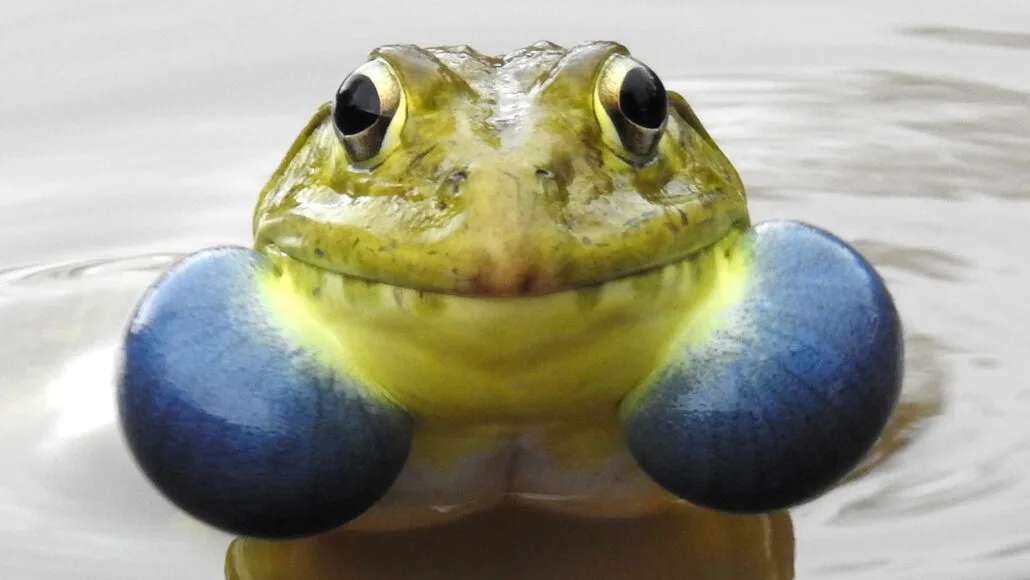You may have seen ballooning throats, but what about pop-out poofs and fat ear bumps?
Sometimes nature outshines even the wildest imagination. Children’s books often depict male frogs inflating a single, round throat pouch to let out their signature croaks. But in reality, that’s only part of the story. Roughly half of frog species call this way, while the rest use a surprising variety of sound-amplifying structures.
Some species sport bright blue paired sacs that resemble oversized headphones hanging around their necks. Others have tan, balloon-like pouches that stick out like Mickey Mouse ears. Still others inflate a single sac jutting upward, giving the impression of a comical pool toy topped with a rhino horn.
In a newly published study, herpetologists Agustín Elías-Costa and Julián Faivovich of the Bernardino Rivadavia Natural Science Museum in Buenos Aires examined vocal structures across 4,358 species of frogs and toads. Their review revealed 20 distinct types of vocal sacs — and found that about one in six species has no vocal sac at all. The results appeared March 7 in the Bulletin of the American Museum of Natural History.
Over a decade, the researchers inspected 777 museum specimens, which Faivovich describes as “libraries of nature.” These preserved collections allowed them to confirm details that drawings alone could never capture. Their survey showed that vocal sacs have been lost between 146 and 196 separate times throughout frog and toad evolution — a remarkable figure given their biological significance.
Even species without sacs can still produce sounds, thanks to the larynx. But sacs act like amplifiers, boosting both volume and mating appeal. At the same time, they make a calling male more noticeable to predators.
While males are the primary croakers, a few female frogs also call. The mating chorus itself can happen in a wide range of environments — along lakeshores, inside tree cavities, or even in tiny water pools nestled within bromeliad plants. Each habitat poses different acoustic challenges and risks, and the variety of vocal sacs reflects the evolutionary solutions frogs have developed to meet them.
